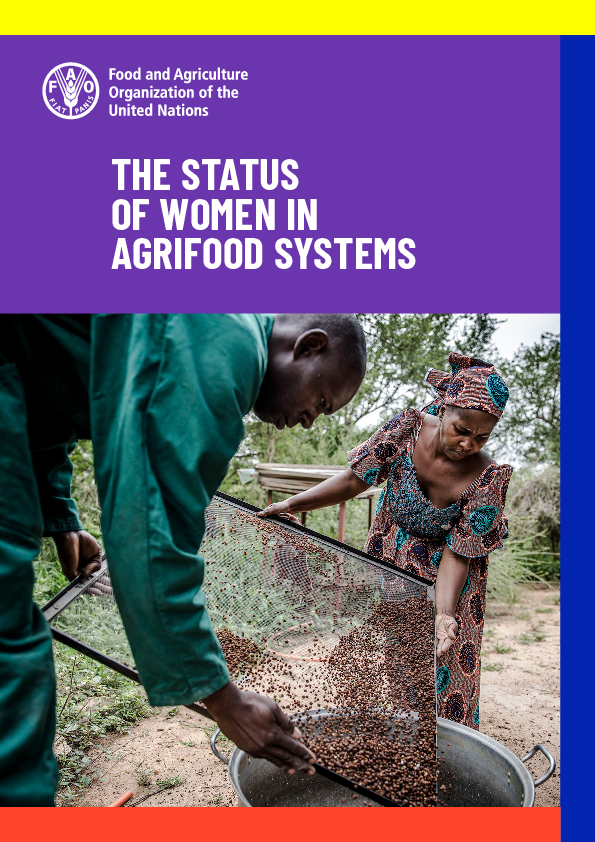 Read this article in French
Read this article in French- Share this article
- Subscribe to our newsletter
Status of women in agrifood systems
The status of women in agrifood systems report was published by the Food and Agriculture Organization of the United Nations (FAO) in April 2023. It goes beyond farming to provide a comprehensive picture of the status of women working across agrifood systems – from production to distribution and consumption.
Globally, 36 per cent of working women and 38 per cent of working men are employed in agrifood systems, the report highlights. However, women’s roles tend to be marginalised and their working conditions are often worse than men’s – irregular, informal, part-time, low-skilled, or labour-intensive. Women doing paid agricultural work also earn just 82 cents for every dollar that men earn.
In addition, women have less secure tenure over land, less access to credit and training, and they have to work with technology designed for men. Along with discrimination, these inequalities create a 24 per cent gap in productivity between female and male farmers on farms of equal size.
The study states that agrifood systems are a more important source of livelihood for women in many countries. In sub-Saharan Africa, for instance, 66 per cent of women’s employment is in the sector, compared with 60 per cent for men. In southern Asia, women overwhelmingly work in agrifood systems (71 per cent of women, versus 47 per cent of men), although fewer women than men are in the labour force.
Closing the gender gap in farm productivity and the wage gap in agricultural employment would increase global gross domestic product by nearly USD 1 trillion and reduce the number of food-insecure people by 45 million.
Moreover, the authors of the report explain how projects that empower women are more beneficial than those that just mainstream gender. If half of all small-scale producers benefited from development interventions that focused on empowering women, it would significantly raise the incomes of an additional 58 million people and increase the resilience of an additional 235 million.
The report also shows that when economies shrink, it is women’s jobs that are lost first. Globally, 22 per cent of women in the ‘off-farm’ segments of agrifood systems lost their jobs in the first year of the COVID-19 pandemic compared to 2 per cent of men.
Women’s food insecurity also rose faster during the pandemic, and they had to take on more care responsibilities, which often resulted in girls missing more school than boys. Gender-based violence also increased, especially domestic violence against women and girls.
The study further confirms that women are more vulnerable to climate shocks and natural disasters, as resource constraints and discriminatory gender norms can make it harder for them to adapt. For example, women’s workloads, including hours worked in agriculture, tend to decline less than men’s during climate shocks such as heat stress.
(FAO/ile)
Read more and download the report on the FAO website





Add a comment
Be the First to Comment